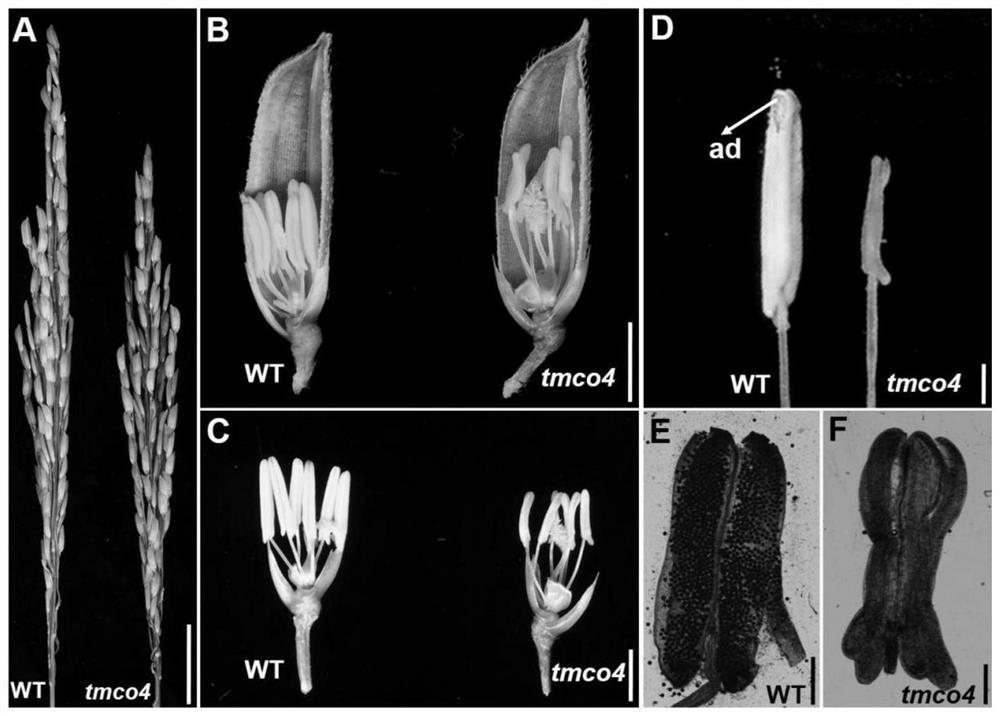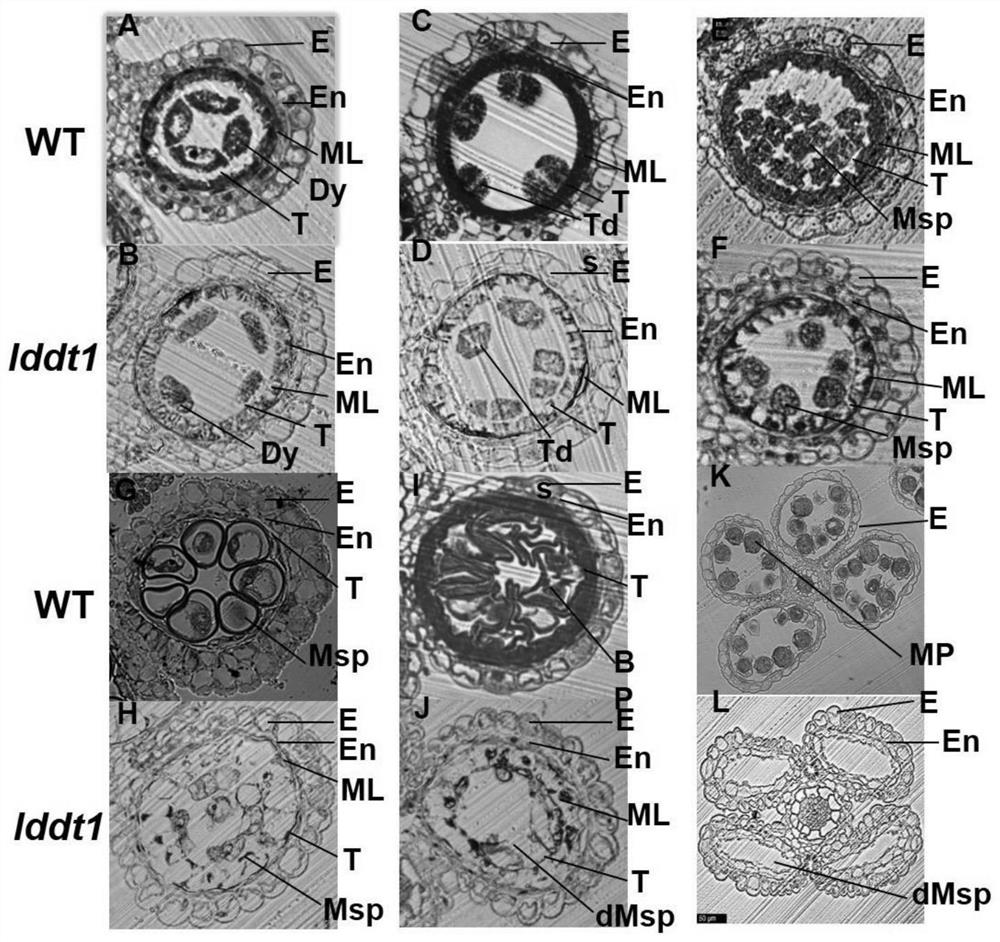Rice male sterility gene OsLDDT1 and molecular marker and application thereof
A male sterility, molecular marker technology, applied in the fields of genetic engineering and plant genetics and breeding
- Summary
- Abstract
- Description
- Claims
- Application Information
AI Technical Summary
Problems solved by technology
Method used
Image
Examples
Embodiment 1
[0059] The lddt1 mutant and the wild-type ZH8015 were photographed with a Nikon D800 digital camera and a Carl Zeiss LumurV12 stereofluorescence stereomicroscope (Marcusari, Germany) to photograph rice plants and flower organ tissues and other materials. in I 2 -KI pollen dyeing process, anthers and pollen grains soaked in a concentration of 1.2% I 2 -KI solution (about 30 seconds), and then photographed and saved under a Leica microscope.
[0060] figure 1 The mutant was derived from the EMS chemical mutagenesis population of indica rice Zhonghui 8015. The mature anthers of the mutant lddt1 were milky white without pollen, and the spikelets were completely aborted.
[0061] Table 1 BC produced by crossing lddt1 mutants with wild type and 02428 respectively 1 f 1 and F 1 、BC 1 f 2 and F 2 The phenotypic statistics of spikelet seed setting rate, inner and outer floral organs and anther development were carried out for each group.
[0062] Table 1 Genetic analysis of l...
Embodiment 2
[0066] Observation of anther development in lddt1 mutant and wild-type ZH8015 by semi-thin section
[0067] (1) Sampling and fixation: Take the florets of wild type and mutant type at different developmental stages on the living body, and immediately place them in freshly prepared FAA fixative solution (V 37%甲醛 :V 冰乙酸 :V 50%乙醇 =5:5:90), use a vacuum pump to slowly pump air, place in a near-vacuum state, slowly deflate until all samples sink to the bottom, replace with new FAA, and fix for 24 hours.
[0068] (2) Gradient alcohol dehydration: put the samples in different vials according to the length of the florets, remove the glumes and carry out alcohol gradient treatment: 50% ethanol, 60% ethanol, 70% ethanol, 85% ethanol, 95% ethanol soaking at various levels 0.5h; then 100% ethanol for 1h, saturated safranin for 2h.
[0069] (3) Pre-permeation: Anhydrous ethanol and Technovit 7100 resin were mixed in equal volumes to prepare a pre-permeation solution, and pre-permeated a...
Embodiment 3
[0075] Scanning electron microscopy observation of lddt1 mutant and wild-type anther development
[0076] 1) Double fixation of samples: fresh florets of lddt1 mutant and wild type were taken and immersed in 2.5% glutaraldehyde solution immediately. The glumes of the samples at the mature stage of the anthers need to be cut to better fix the samples, and the glumes of other samples do not need to be removed, so as not to damage the surface structure of the anthers during sample processing. The subsequent sample washing and acid treatment methods are the same as those for transmission electron microscopy.
[0077] 2) Dehydration: The dehydration treatment is the same as the transmission electron microscope treatment method, the only difference is that the last step of acetone treatment is replaced by absolute ethanol treatment for 20 minutes.
[0078] 3) drying and observation: critical point drying. The auspicious products were dried in a Hiachai HCP-2 critical point dryer. ...
PUM
 Login to View More
Login to View More Abstract
Description
Claims
Application Information
 Login to View More
Login to View More - R&D
- Intellectual Property
- Life Sciences
- Materials
- Tech Scout
- Unparalleled Data Quality
- Higher Quality Content
- 60% Fewer Hallucinations
Browse by: Latest US Patents, China's latest patents, Technical Efficacy Thesaurus, Application Domain, Technology Topic, Popular Technical Reports.
© 2025 PatSnap. All rights reserved.Legal|Privacy policy|Modern Slavery Act Transparency Statement|Sitemap|About US| Contact US: help@patsnap.com



